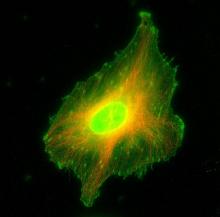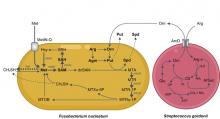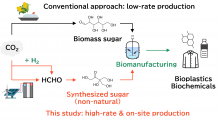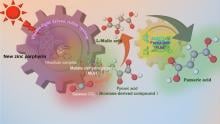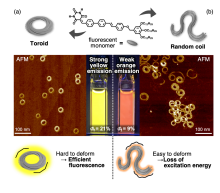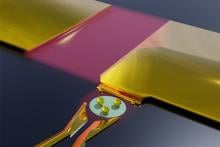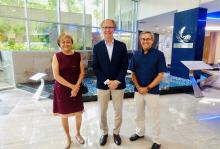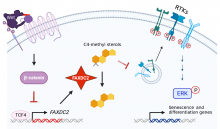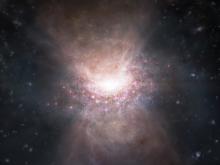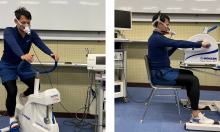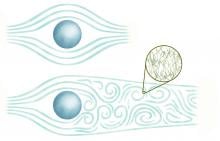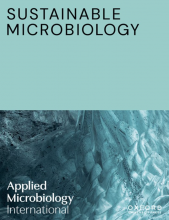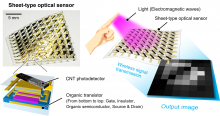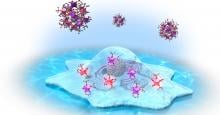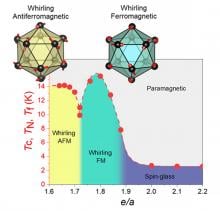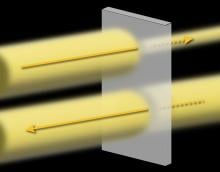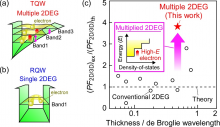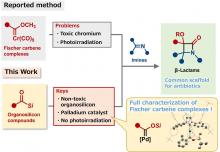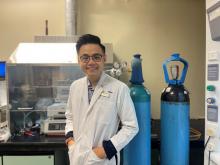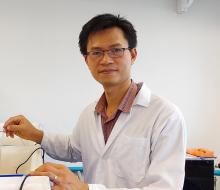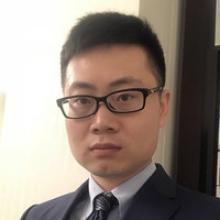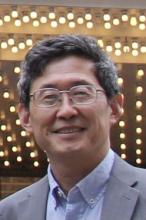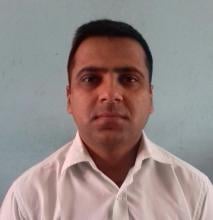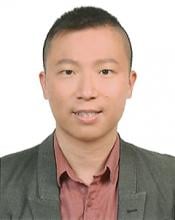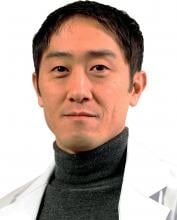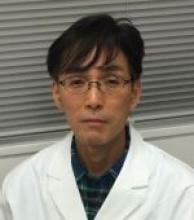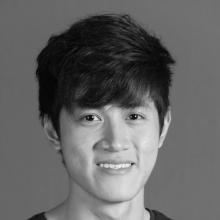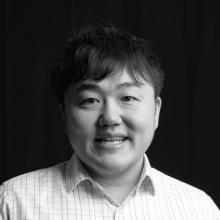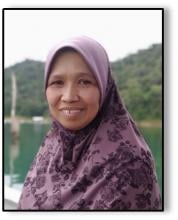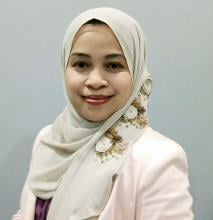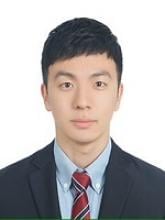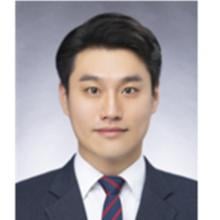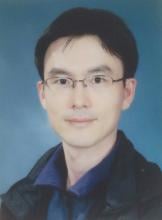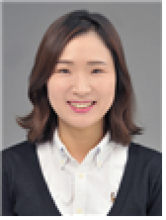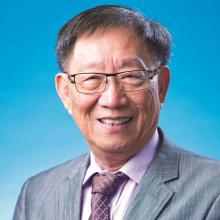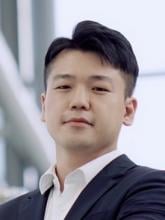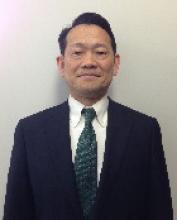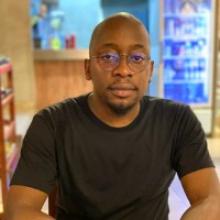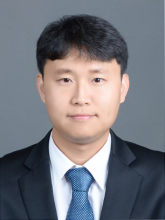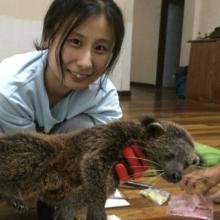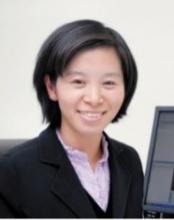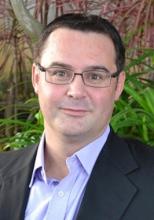Science
News
15 Feb 2024
Researchers from Osaka University found that the oral bacterium Streptococcus gordonii activates another bacterial species, Fusobacterium nucleatum, to produce large quantities of methyl mercaptan, a compound responsible for bad breath. Disrupting this interaction could therefore help treat halitosis, and possibly also help prevent the development of more serious tooth and gum disease.
14 Feb 2024
Researchers from Osaka University and collaborating partners succeeded in biomanufacturing from chemically synthesized sugar for the first time in the world. With refinement of this technology, one can envision a future society in which the sugar required for biomanufacturing can be obtained "anytime, anywhere, and at high rate". In the future, biomanufacturing using chemically synthesized sugar is expected to be a game changer in the biotechnology field—including the production of biochemicals, biofuels, and food, where sugar is an essential raw material—ultimately leading to the creation of a new bio-industry.
14 Feb 2024
An innovative and more efficient way to produce fumaric acid that not only reduces carbon dioxide emissions, but also reuses waste resources to make biodegradable plastics
13 Feb 2024
The properties of supramolecular polymers are dictated by the self-assembled state of the molecules. However, not much is known about the impact of morphologies on the properties of nano- and mesoscopic-scale polymeric assemblies. Recently, a research team demonstrated how terminus-free toroids and random coils derived from the same luminescent molecule show different photophysical properties. The team also presented a novel method for purifying the toroidal structure.
13 Feb 2024
Researchers from the Institute of Industrial Science, The University of Tokyo have solved a foundational problem in transmitting quantum information, which could dramatically enhance the utility of integrated circuits and quantum computing.
13 Feb 2024
AI records rare bird footage, Lighting up IoT and smart cities, Crystal language designs new materials, Detecting toxins with mobile phones, and Dragonfly wings for better aerodynamics. Plus join us for SciCom coffee. Read all in the latest Editor's Choice.
09 Feb 2024
Asia Research News monitors the latest research news in Asia. Some highlights that caught our attention this week are growing placenta organoids, a 90-million-year old fossil, and how COVID-19 can cause insomnia, but people were more relaxed during the emergency measures.
07 Feb 2024
Yokohama National University scientists are working towards creating a better tomorrow by addressing diverse challenges, from snow algae and tropical cyclones to AI cyberthreats, and much more.
06 Feb 2024
The estate of the late Ms Diana Koh gifted S$1M to Duke-NUS Medical School and NUS Medicine to fund young cancer researchers and raise awareness about cancer research advances. The gift establishes research funds, grants, prizes, and learning series to support innovative approaches to cancer treatment by the next generation of scientists and clinicians.
02 Feb 2024
A study led by Duke-NUS Medical School has found an important connection between cancer, stem cells and the building blocks of cholesterol. Specifically, the research reveals how the enzyme FAXDC2 influences cancer cell growth and differentiation through its role in cholesterol synthesis, suggesting possible new approaches to cancer treatment.
01 Feb 2024
Theoretical predictions have been confirmed with the discovery of an outflow of molecular gas from a quasar when the Universe was less than a billion years old.
01 Feb 2024
Researchers from Osaka University and IMRA AMERICA demonstrated a 300 GHz-band wireless link that was able to transmit data over a single channel at a rate of 240 gigabits per second. The wireless communication system employs signal generators based on lasers that have ultra-low phase noise in the sub-terahertz band. This rate is the highest so far reported at these frequencies and is a substantial step forward in 300 GHz-band communications for 6G networks.
31 Jan 2024
Attended by President Ing-wen Tsai, Academia Sinica launched Taiwan's first self-developed 5-qubit superconducting full-stack quantum computer at its quantum computer progress presentation today. During the event, AS President James Liao presented the research team’s self-developed 4-inch quantum wafer to President Tsai. The event was also attended by Chia-Lung Lin, Secretary-General to the President; Tsung-Tsong Wu, Chairman of the National Science and Technology Council and Chuan-Neng Lin, Vice Minister of Economic Affairs. It marks an important milestone in the development of Taiwan's quantum technology.
30 Jan 2024
A team of researchers from Osaka Metropolitan University assessed the feasibility of conducting cardiopulmonary exercise testing with the upper limbs as an alternative to the conventional method that uses the lower limbs. The researchers investigated the relationship between heart rate and oxygen uptake during exercise stress tests using a cycle ergometer and an arm crank ergometer, and estimated maximal oxygen uptake. The study participants were 17 male collegiate athletes from rowing and cycling clubs. The results showed that the estimated maximal oxygen uptake for both rowing and cycling groups was lower on the arm crank ergometer than on the cycle ergometer. Additionally, this study showed that exercise testing using an upper extremity ergometer underestimates cardiopulmonary function, regardless of upper limb training status.
29 Jan 2024
A theoretical framework for measuring the Reynolds similitude in superfluids could help demonstrate the existence of quantum viscosity
24 Jan 2024
This week sees the launch of the first published content in Sustainable Microbiology, the new open access journal which will apply microbiology to sustainability. The journal is published by Applied Microbiology International.
23 Jan 2024
Researchers from SANKEN (The Institute of Scientific and Industrial Research), at Osaka University developed an optical sensor consisting of carbon nanotube photodetectors and organic transistors formed on an ultrathin, flexible polymer film. A wireless system reads the images from the sensor. Experiments showed the sensor has high sensitivity, a wide bandwidth, and robustness to extreme deformation such as bending and crumpling. This sensor has high potential for use in applications such as non-destructive imaging, non-sampling liquid quality evaluation, wearable devices, and soft robotics.
23 Jan 2024
A one-stop resource for expertise and science is now available. Get tip sheets for research stories from Asia.
23 Jan 2024
The Hayabusa2 mission that collected samples from the asteroid Ryugu has provided a treasure trove of insights into our solar system. After analyzing samples further, a team of researchers have unearthed evidence that cometary organic matter was transported from space to the near-Earth region.
22 Jan 2024
Researchers from Thailand have pioneered the conversion of waste HDPE milk bottles into high-stiffness composites, utilizing PALF reinforcement for a 162% increase in flexural strength and 204% in modulus. This eco-friendly upcycling boosts mechanical properties while sequestering carbon, presenting a promising path for sustainable materials.
22 Jan 2024
A water-soluble, luminescent europium complex enables evaluation of malignancy grade in model glioma tumor cells.
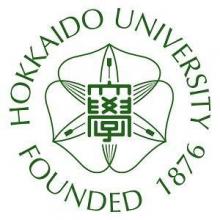
19 Jan 2024
Temperature-controlled, reversible shifting of molecular gear motion in a solid crystal opens new possibilities for material design.
18 Jan 2024
Non-Heisenberg-type approximant crystals have many interesting properties and are intriguing for researchers of condensed matter physics. However, their magnetic phase diagrams, which are crucial for realizing their potential, remain completely unknown. Now, for the first time, a team of researchers has constructed the magnetic phase diagram of a non-Heisenberg Tsai-type 1/1 gold-gallium-terbium approximant crystal. This development marks a significant step forward for quasicrystal research and for the realization of magnetic refrigerators and spintronic devices.
18 Jan 2024
A research group led by Osaka Metropolitan University has discovered significant nonreciprocal optical absorption of LiNiPO4, referred to as the optical diode effect, in which divalent nickel (Ni2+) ions are responsible for magnetism, by passing light at shortwave infrared wavelengths used in optical communications. Furthermore, they have uncovered that it is possible to switch the optical diode effect by applying a magnetic field. This is a step forward in the development of an innovative optical isolator that is more compact and can control light propagation, replacing the conventional optical isolators with complex structures
16 Jan 2024
Researchers from Osaka University and collaborating partners have improved the efficiency of heat-to-electricity conversion in gallium arsenide semiconductor microstructures. By judicious spatial alignment of electrons within a two-dimensional electron gas system with multiple subbands, one can substantially enhance the power factor compared with previous iterations of analogous systems. This work is an important advance in modern thermoelectric technology and will benefit the global integration of the Internet of Things.
16 Jan 2024
Researchers from Osaka University have discovered a novel treatment to relieve cytokine release syndrome (CRS), a life-threatening inflammation triggered by a serious infection or severe burn. Treatment with a short-acting antibody reduces the inflammatory effects of interleukin-6, a key cytokine in CRS while avoiding the side effects associated with previous longer-acting therapies.
16 Jan 2024
Researchers from Osaka University have simplified the operation of an important class of chemical transformation: synthesis of beta-lactams, the intricate scaffold of many antibiotics. Their experimental protocol minimizes the toxicity that is a common feature of similar Fischer-carbene synthetic methodologies, and was used to synthesize the scaffold of the thienamycin antibiotic in high yield. This work is an important advancement in sustainable chemistry that should benefit drug development and other chemical syntheses.
15 Jan 2024
Research by Assistant Professor Edison Ang Huixiang and his team from National Institute of Education/Nanyang Technological University Singapore
15 Jan 2024
Unleashing stem cells from dog urine, Electronic Tongue, Tapping into human motion energy, How neurons network, and A radical use for plastic bags. Plus Communicating science two decades on. Read all in the latest Editor's Choice.
Events

12 Nov 2018
Hear innovative science and benefit from the vast knowledge shared at the FCS 2018!

10 Jun 2018
The Kavli IPMU invites you gain insight into how physics predicts our Universe may exist alongside an infinite number of other universes, and how philosophy suggests the world as we know it may not exist at all.

11 Jul 2018
The Asia-Pacific Network for Global Change Research (APN) is organizing a Thai Youth Poster Session at its 23rd joint Intergovernmental Meeting and Scientific Planning Group Meeting in Bangkok, Thailand on 9–12 July 2018, hosted by the National Research Council of Thailand.

21 Jul 2018
6th World Moringa Meet Brings Moringa Education, Economics, and Environmental Information to Global Platform

15 May 2018
With 350+ participants representing the core of China’s market, the Biopharma Development & Production Week is back to spur industry learning, showcase innovation and enable business contacts.

21 Apr 2018
Organized by the Student Executive Council, Tun Dr Ismail College, Universiti Kebangsaan Malaysia (UKM)

23 Apr 2018
2018 Asia-Pacific Rainforest Summit to Showcase Approaches to Balancing Economic Growth, Forest Conservation and Human Well-Being.

20 Apr 2018
Japan SciCom Forum 2018, 20 April Tokyo: perspectives on global outreach, hands-on sessions with experts in global press, discussion and community-building: everything for your science communication needs!

05 Aug 2018
The 8th International Multidiscipline Conference on Optofluidics 2018 will be held at Baolong Hotel, Shanghai, P.R.China on 5th – 8th August 2018

21 Feb 2018
Join us in February 2018 to discover the leading diagnostics and monitoring technology in Singapore

27 Jun 2018
As Asia's leading Bio Event, BIOtech Japan 2018 is expected to gather 420 exhibitors and 41,000 visitors from around the world.

22 Jan 2018
Advancing Science, Creating Technologies for a Better World

27 May 2018
The conference will cover all the aspects of photovoltaic technology and manufacturing, including equipments/devices, materials, processes, manufacturing, integration, as well as emerging photovoltaic technologies and applications. It will consist of various programmes incorporating different topics.

22 Dec 2017
The Nagoya Medal Award is awarded every year to two organic chemists who have made significant original contributions to the field. This year’s Gold Medal will be presented to Prof. “Bert” Meijer (Eindhoven University of Technology, Netherlands), and the Silver Medal will be presented to Prof. Hiroaki Suga (The University of Tokyo, Japan).

10 May 2018
Mark your calendar on the 10th-12th May 2018 as the International Invention, Innovation & Technology Exhibition (ITEX 2018) takes center stage once again at the Kuala Lumpur Convention Centre.

13 Nov 2018
Attended by leaders in higher education to discuss topics of interest while offering opportunities for professional development and capacity building.

25 Sep 2018
The World Social Science Forum 2018 is the fourth in a series of international, interdisciplinary social science conferences focusing on contemporary global challenges. The Forum will address the issue of security for all people in an equitable and sustainable world.

20 Nov 2017
ISTbM-5 with the 13th Hirata Award and the 3rd Tsuneko and Reiji Okazaki Award

14 May 2018
Call for Papers

01 Mar 2018
Revamped and revitalised from BioPharma Asia Convention, we’re focusing on the hottest trends to bring you Asia’s most exciting pharma event.

21 Nov 2017
FUNDAMENTAL SCIENCE CONGRESS 2017 (FSC 2017) will take place at University of Putra Malaysia on 21-22 November.

12 Dec 2017
The international conference will take place from 12 – 14 December 2017 in Jakarta, Indonesia. SUBMISSION DEADLINE: 30th September 2017.

02 Sep 2017
The project is a collaboration between Singapore-based photographer, Pearl Gan with Professor J.Kevin Baird in association with the Oxford University Clinical Research Unit, Vietnam; Eijkman Oxford Clinical Research Unit, Jakarta and The Welcome Trust.

07 May 2018
Meetings International proudly announces the Global Experts Meeting on Green Chemistry and Engineering scheduled on May 7th and 8th 2018 at Tokyo, Japan with a theme "A Paradigm towards a sustainable Green Pavement”

30 Nov 2017
SELECTBIO Asia is launching its Point-of-Care Diagnostics and Global Health Asia 2017 Conference to be held November 30-December 1, 2017 in Taipei, Taiwan.

26 Oct 2017
To be held on October 26-27, 2017 in Porto, Portugal, it is a meeting place for leaders in the field to discuss the issues and challenges scientists and researchers face in all aspects of the biomarker and diagnostic development process from discovery to translation to commercialization.

18 Sep 2017
Learn about the latest tech driven consumer trends for 2017 at Convergence, the Emerging Technology Innovation Conference & Expo

25 Jul 2017
25th July 2017, Exhibition Hall, Institute of Research Management and Services, UM

03 Aug 2017
The International ERATO Itami Molecular Nanocarbon Symposium 2017 will be held on August 3-4, 2017 at Nagoya University, Japan. This symposium will focus on recent achievements in the synthesis, utilization, and analysis of structurally well-defined nanocarbons and related materials.
Researchers
The Asian Institute of Technology
Dr. Dong currently works at the Asian Institute of Technology. He does research in Aquaculture, Pathology, Infectious Diseases, and Aquatic Bioscience.
City University of Hong Kong (CityU)
Dr. Yu Xinge is currently an Associate Professor at the Department of Biomedical Engineering at City University of Hong Kong.
City University of Hong Kong (CityU)
Prof. Yang Yong's primary research interest is in the development and mechanical behavior of advanced structural materials, such as metallic glasses and high entropy alloys. His recent research also extends to mechanics of flexible electronics and hydrogels.
City University of Hong Kong (CityU)
Professor Ren Yang is a physicist and Chair Professor at the Department of Physics at City University of Hong Kong. His research interests focus on the structure-property relationship studies of materials by utilizing synchrotron X-ray and neutron scattering and other techniques.
I am a Health Economist/Researcher, working with UN agencies in the development of policy documents for developing countries including Nepal, Ethiopia and Pakistan.
City University of Hong Kong (CityU)
Dr Brian Kot is a registered diagnostic radiographer and veterinary imaging researcher in the City University of Hong Kong.
Professor Shinya Maenosono leads his research group at Japan Advanced Institute of Science and Technology (JAIST). His research in JAIST has focused on two main areas of interest in the field of materials chemistry and nanotechnology. The first area involved wet chemical synthesis of semiconductor nanoparticles with controlled size, shape and composition for energy conversion device applications. The second area has focused on the synthesis and bioapplication development of monometallic and alloyed multimetallic nanoparticles.
Osaka City University
Takami Tomiyama is currently an Associate Professor at the Graduate School of Medicine of Osaka City University.
Singapore University of Technology and Design
Mr. Lee Cheng Pau is currently pursuing his Ph.D in the Singapore University of Technology and Design (SUTD) focusing on 3D Food Printing.
Singapore University of Technology and Design
Dr Michinao Hashimoto's research interest is on low-cost device fabrication and their application in point-of-care setting.
Universiti Teknologi MARA (UiTM)
Department of Microbiology / Biomolecular Sciences
Universiti Teknologi MARA
Malaysia
International Islamic University Malaysia (IIUM)
Dr. Irina's research focuses on sustainability, including an analysis of environmental management, the urban environment, climate change adaptation and mitigation, and education for sustainable development, or ESD, and its application in real-world contexts.
The Education University of Hong Kong (EdUHK)
Dr. Louisa Chung is a Registered Nutritionist of Association for Nutrition (UK) with ten years experience in weight management and physical fitness projects. She is now working on an innovative dietary intake method which aims better result in weight loss and nutrition education.
Daegu Gyeongbuk Institute of Science and Technology (DGIST)
Dr. Sungwoong Jeon's research interests are biomedical micro/nano robot, animal in vivo experiments and MEMS piezoelectric artificial basilar membrane.
Daegu Gyeongbuk Institute of Science and Technology (DGIST)
Dr. Seong-Kyoon Choi is a senior researcher at the Division of Biotechnology of Daegu Gyeongbuk Institute of Science and Technology (DGIST)
Daegu Gyeongbuk Institute of Science and Technology (DGIST)
Dr. Wookbong Kwon is currently a postdoctoral researcher at the Division of Biotechnology of Daegu Gyeongbuk Institute of Science and Technology (DGIST)
Daegu Gyeongbuk Institute of Science and Technology (DGIST)
Myungin Baek is currently an Assistant Professor at Daegu Gyeongbuk Institute of Science and Technology (DGIST).
Daegu Gyeongbuk Institute of Science and Technology (DGIST)
Jung Ah Cho is a Visiting Professor at the School of Undergraduate Studies, College of Transdisciplinary Studies, DGIST.
City University of Hong Kong (CityU)
Professor Liu Chain-Tsuan is University Distinguished Professor at City University of Hong Kong, and Senior Fellow of the Hong Kong Institute for Advanced Study (HKIAS).
Lecturer in Forensic Chemistry field. Actively engaging in agricultural waste upcycling into nanatechnology products.
Daegu Gyeongbuk Institute of Science and Technology (DGIST)
Hongkyung Lee is currently an assistant professor in the Department of Energy Science and Engineering at DGIST.
Osaka City University
Eriko Kage-Nakadai is a professor at the Graduate School of Human Life Science of Osaka City University.
Osaka City University
Tomoya Kawaguchi is a professor at Osaka City University. His top areas of expertise are Lung Cancer, Non-Small Cell Lung Cancer, EGFR Positive Lung Cancer, and Chronic Obstructive Pulmonary Disease.
Daegu Gyeongbuk Institute of Science and Technology (DGIST)
Hochun Lee is a professor at the Department of Energy Systems Engineering, Daegu Kyeongbuk Institute of Science & Technology (DGIST).
Daegu Gyeongbuk Institute of Science and Technology (DGIST)
Philip Chikontwe is a PhD Candidate in the Medical Imaging and Signal Processing Laboratory (MISPL) under the Robotics Engineering department at DGIST.
Daegu Gyeongbuk Institute of Science and Technology (DGIST)
Sang Hyun Park is an Assistant Professor in the Department of Robotics Engineering at DGIST
Hiroshima University
Prof. Miyabi Nakabayashi works on tropical ecology, especially on seed dispersal by mammals in Sabah, Malaysian Borneo. Recently, she is focusing on seed dispersal system of fig trees (Ficus spp.) and large-seeded plants such as durians.
Duke-NUS Medical School
Prof. Ann Marie Chacko lead the translational efforts for a portfolio of in vivo PET, SPECT, CT and optical imaging agents that span key therapeutic areas including oncology, immunology, infectious disease and neurobiology.
Daegu Gyeongbuk Institute of Science and Technology (DGIST)
Yoonhee Jang is a Professor at the Department of Energy Science and Engineering of Daegu Gyeongbuk Institute of Science and Technology, Korea
Duke-NUS Medical School
Prof Smith’s research programme primarily investigates the ecology and evolution of zoonotic viruses and the molecular epidemiology of human respiratory pathogens.
Giants in history
Turkish astrophysicist Dilhan Eryurt (29 November 1926 – 13 September 2012) conducted research on how the sun affects environmental conditions on the moon.
Chinese biochemist Chi Che Wang (1894 - 1979), one of the first Chinese women to study abroad, advanced to prominent research positions at American institutions including the University of Chicago and the Northwestern University Medical School.
Ruby Sakae Hirose (1904 – 1960) was a Japanese-American scientist whose research contributed significantly to our understanding of blood clotting, allergies and cancer.
Chinese electron microscopy specialist Li Fanghua (6 January 1932 – 24 January 2020) facilitated the high-resolution imaging of crystal structures by eliminating interference.
Sálim Moizuddin Abdul Ali (12 November 1896 – 20 June 1987), commonly referred to as the Birdman of India, was the first person to conduct systematic surveys of birds from across India.
Haisako Koyama (1916 – 1997) was a Japanese solar observer whose dedication to recording sunspots – cooler parts of the sun’s surface that appear dark – produced a sunspot record of historic importance.
Michiaki Takahashi (17 February 1928 – 16 December 2013) was a Japanese virologist who developed the first chickenpox vaccine.
Toshiko Yuasa (11 December 1909 – 1 February 1980) was the first Japanese female physicist whose research on radioactivity shed light on beta decay – the process in which an atom emits a beta particle (electron) and turns into a different element.
Angelita Castro Kelly (1942-2015) was the first female Mission Operations Manager (MOM) of NASA. She spearheaded and supervised the Earth Observing System missions during its developmental stage.
Malaysia’s first astrophysicist, Mazlan binti Othman (born 11 December 1951) was instrumental in launching the country’s first microsatellite, and in sending Malaysia’s first astronaut, Sheikh Muszaphar Shukor, into space.
Known as Mr. Natural Rubber, chemist and researcher B. C. Shekhar (17 November 1929 – 6 September 2006) introduced a number of technical innovations that helped put Malaysia’s natural rubber industry on the world map.
Shinichiro Tomonaga (31 March 1906 – 8 July 1979), together with Richard Feynman and Julian Schwinger, was awarded the Nobel Prize in Physics in 1965, for their contributions to advance the field of quantum electrodynamics. Tomonaga was also a strong proponent of peace, who actively campaigned against the proliferation of nuclear weapons and promoted the peaceful use of nuclear energy.
South Korean theoretical physicist Daniel Chonghan Hong (3 March 1956 – 6 July 2002) achieved fame in the public sphere through his research into the physics of popcorn.
Japanese chemist Kenichi Fukui (4 October 1918 – 9 January 1998) was the first Asian scientist to be awarded the Nobel Prize in Chemistry. Together with Roald Hoffman, he received this honour in 1981 for his independent research into the mechanisms of chemical reactions.
Chinese palaeontologist, archaeologist and anthropologist Pei Wenzhong (January 19, 1904 – September 18, 1982) is regarded as a founder of Chinese anthropology.
Physicist Narinder Singh Kapany (31 October 1926 – 4 December 2020) pioneered the use of optical fibres to transmit images, and founded several optical technology companies. Born in Punjab, India, he worked at a local optical instruments factory before moving to London for PhD studies at Imperial College. There, he devised a flexible fibrescope to convey images along bundles of glass fibres.
Japanese physicist Ukichiro Nakaya (1900-1962) made the world’s first artificial snowflakes. He started his research on snow crystals in the early 1930s at Hokkaido University, where there is an unlimited supply of natural snow in winter. By taking over 3,000 photographs, he established a classification of natural snow crystals and described their relationship with weather conditions.
The field of solid-state ionics originated in Europe, but Takehiko Takahashi of Nagoya University in Japan was the first to coin the term ‘solid ionics’ in 1967. ‘Solid-state ionics’ first appeared in 1971 in another of his papers, and was likely a play on ‘solid-state electronics’, another rapidly growing field at the time.
Charles Kuen Kao (Nov. 4, 1933 to Sept. 23, 2018) was an engineer who is regarded as the father of fibre optics. His work in the 1960s on long distance signal transmission using very pure glass fibres revolutionized telecommunications, enabling innovations such as the Internet.
Chika Kuroda (24 March 1884 – 8 November 1968) was a Japanese chemist whose research focussed on the structures of natural pigments.
Motoo Kimura (13 November 1924 – 13 November 1994) was a Japanese theoretical population geneticist who is best remembered for developing the neutral theory of molecular evolution.
Meghnad Saha (6 October 1893 – 16 February 1956) was an Indian astrophysicist best known for formulating the Saha ionization equation which describes the chemical and physical properties of stars.
Sir Jagadish Chandra Bose (30 November 1858 – 23 November 1937) was a scientist and inventor who contributed to a wide range of scientific fields such as physics, botany and biology.
Osamu Shimomura (27 August 1928 – 19 October 2018) was a Japanese organic chemist and marine biologist who dedicated his career to understanding how organisms emitted light.
Subrahmanyan Chandrasekhar (19 October 1910 – 21 August 1995) was an Indian astrophysicist who studied the structure and evolution of stars.
Joo-myung Seok (November 13, 1908 – October 6, 1950) was a Korean butterfly entomologist who made important contributions to the taxonomy of the native butterfly species in Korea.
Mathematician Maryam Mirzakhani (12 May 1977 – 14 July 2017) was the first and only woman and Iranian to date to win the Fields Medal in 2014 for her work on curved surfaces.
Sir Chandrasekhara Venkata Raman (7 November 1888 – 21 November 1970) was an Indian physicist who performed ground-breaking research in the field of light-scattering.
Mohammad Abdus Salam (29 January 1926 – 21 November 1996) was a theoretical physicist and the first Pakistani to receive a Nobel Prize in science.
Srinivasa Ramanujan (22 December 1887 – 26 April 1920) was a math prodigy and widely considered one of India’s greatest mathematicians. Despite having almost no formal training in mathematics, he made substantial contributions to mathematical analysis, number theory, infinite series and continued fractions.
Gopalasamudram Narayanan Ramachandran (8 October 1922 – 7 April 2001) is best known for developing the Ramachandran plot to understand the structure of short chains of amino acids, known as peptides.
Hitoshi Kihara (1893 – 1986) was one of the most famous Japanese geneticists of the 20th century. One of his most significant contributions was identifying sex chromosomes (X and Y) in flowering plants.
Chien-Shiung Wu (31 May 1912 – 16 February 1997) was an experimental physicist who made several important contributions to nuclear physics. Wu worked on the Manhattan Project – a top-secret program for the production of nuclear weapons during World War II and helped to develop a process for separating uranium into U235 and U238.
Meemann Chang (born 17 April 1936) is a Chinese palaeontologist who studied the fossils of ancient fish to understand the evolution of life. By examining fossils, she uncovered new insights on how vertebrates, animals with a backbone, migrated from the sea and became adapted to live on land.
Bibha Chowdhuri (1913 – 2 June 1991) was an Indian physicist who researched on particle physics and cosmic rays. In 1936, she was the only female to complete a M.Sc. degree at the University of Calcutta.
Lin Lanying (7 February 1918 – 4 March 2003) was a Chinese material engineer remembered for her contributions to the field of semiconductor and aerospace materials. Lanying was born into a family who did not believe in educating girls and she was not allowed to go to school.
Japanese geochemist Katsuko Saruhashi developed the first method and tools for measuring carbon dioxide in seawater


